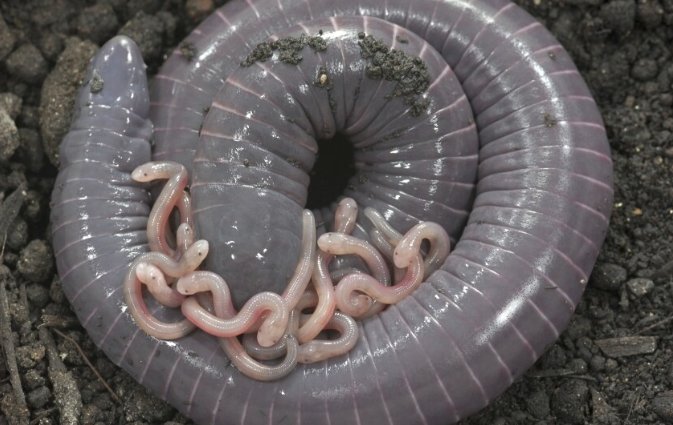A Glimpse into the Underground
The ringed caecilian, known scientifically as Siphonops annulatus, is a testament to the diversity of life that thrives beneath our feet. Its sleek, bluish-black body, adorned with white rings, is perfectly evolved for a life spent burrowing through the earth.
These creatures are not often seen, but when they are, it’s a sight to behold. Their unique appearance often leads to a mix of fascination and unease, a reminder that even in today’s age of exploration, there are beings that seem to belong to another world.

Unearthing Maternal Secrets
What sets the ringed caecilian apart is its extraordinary maternal care, a rarity among amphibians. Mothers provide their offspring with a protein-rich layer of skin for nourishment, a behavior known as maternal dermatophagy.
This practice, once thought to be unique to certain African caecilians, has now been observed in this South American species, suggesting a deep evolutionary link. The dedication of caecilian mothers challenges the often-held belief that amphibians are not nurturing parents.
The Milk of Amphibians
In a groundbreaking discovery, researchers found that ringed caecilian mothers produce a milk-like substance, providing their young with essential nutrients during the early stages of life. This finding is revolutionary, as it marks the first time such behavior has been observed in egg-laying amphibians.
The ‘milk’ is secreted from the mother’s cloaca and is rich in fats and carbohydrates, vital for the growth of the hatchlings. This discovery has not only provided insight into the ringed caecilian’s life but has also opened new avenues for understanding the evolution of lactation in vertebrates.














